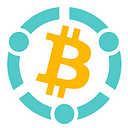ViaBTC | Ethereum Improvement Proposal 3675 Launched on GitHub, Ethereum 2.0 Upgrade Is in Progress
A few days ago, ConsenSys researcher Mikhail Kalinin teamed up with Ethereum Foundation researcher and developer Danny Ryan, and Ethereum founder Vitalik Buterin to launch the Ethereum Improvement Proposal (EIP) 3675 on Github. The proposal aims to promote the merger of the existing Ethereum main chain and Eth2 chain, transitioning the network’s consensus mechanism from proof-of-work (PoW) to proof-of-stake (PoS). Developer Tim Beiko also initiated a discussion on this proposal at the Ethereum Core Devs Meeting.
The EIP brings Ethereum 2.0 one step closer to going live. It notes that no safety failures were detected since the launch of Eth2’s beacon chain in December 2020. The long period of running without failures demonstrates the sustainability of the beacon chain system and witnesses its readiness to start driving and become a security provider for the Ethereum mainnet.
According to current data (as of July 27), the number of active validators on the Ethereum 2.0 beacon chain has reached 200,246, whereas the total of staked Eth sums up to 6,607,279 units, with an annualized rate of return of 6.1%. It can be seen that the current beacon chain has enough decentralized full nodes to verify blocks, thereby ensuring the security and decentralization of the Ethereum network.
Ethereum 2.0 is slated to help the Ethereum network run at scale, processing lots more transactions at a faster pace. The rapid development of the Decentralized Finance (DeFi) ecosystem led to an exponential growth in transaction volume, but also caused transactions on Ethereum to become slow, cumbersome, and costly, which has set a high threshold for users and even hindered the popularization of DeFi.
Thus, the Ethereum community has been working on Ethereum scaling. Last December, the beacon chain, which represents the most important symbol of Ethereum 2.0, was finally launched, whereas the PoW chain soon expects a major London upgrade. Subsequently, the community plans to gradually transfer the relevant information on the PoW chain to the PoS chain, completing the merger of the two chains.
After the merger, Ethereum will step-by-step complete the technical maintenance and improvement of the PoS chain, and then adopt sharding technology to provide higher scalability. With data sharding, the Ethereum network will be capable of tens of thousands of transactions per second, enabling it to support lots more applications.
In Vitalik Buterin’s vision, the growth of Ethereum 2.0 will not only depend on the development of the main chain itself. He wants the main chain to maintain its decentralization, security, and stability so as to remain trustworthy to users. On the other hand, the design of Layer 1 doesn’t have to be too complex. Otherwise, it will be troublesome to carry out major updates and easily cause systemic damage.
Therefore, the future scaling and innovation of Ethereum will be placed on Layer 2, so that the technological innovations can be made without affecting the security of the main chain. It will not only enable the main chain to support higher-level and more complex applications, but also avoid damage to the basic system during updates.
As we can see, the purpose of Ethereum 2.0 is to improve the scalability of the existing Ethereum protocol, and while ensuring security, make the Ethereum protocol more user-friendly and popular. On the other hand, the gradual development of Layer 2 technologies such as ZK Rollup and Optimistic Rollup will hopefully improve the throughput for the Ethereum system.
Vitalik Buterin once referred to Ethereum as a proof of concept of the “world computer” in the Ethereum white paper. In the light of the present situation, it seems that the decentralization, security, openness and transparency of Ethereum 1.0, as well as the original smart contract, have been widely recognized by a large number of users and developers. In the impossible triangle of the blockchain, decentralization and security have been realized by the Ethereum system, and the unsettled scalability will be gradually overcome with the launch of Ethereum 2.0.
Obviously, compared with Ethereum 1.0, Ethereum 2.0 has undergone huge changes and made a leapfrog in transaction processing capabilities. With the improvement of Ethereum’s capabilities, the popular DeFi and NFT markets will also better develop, which will bring Ethereum one step closer to its final goal as the “world computer”.
